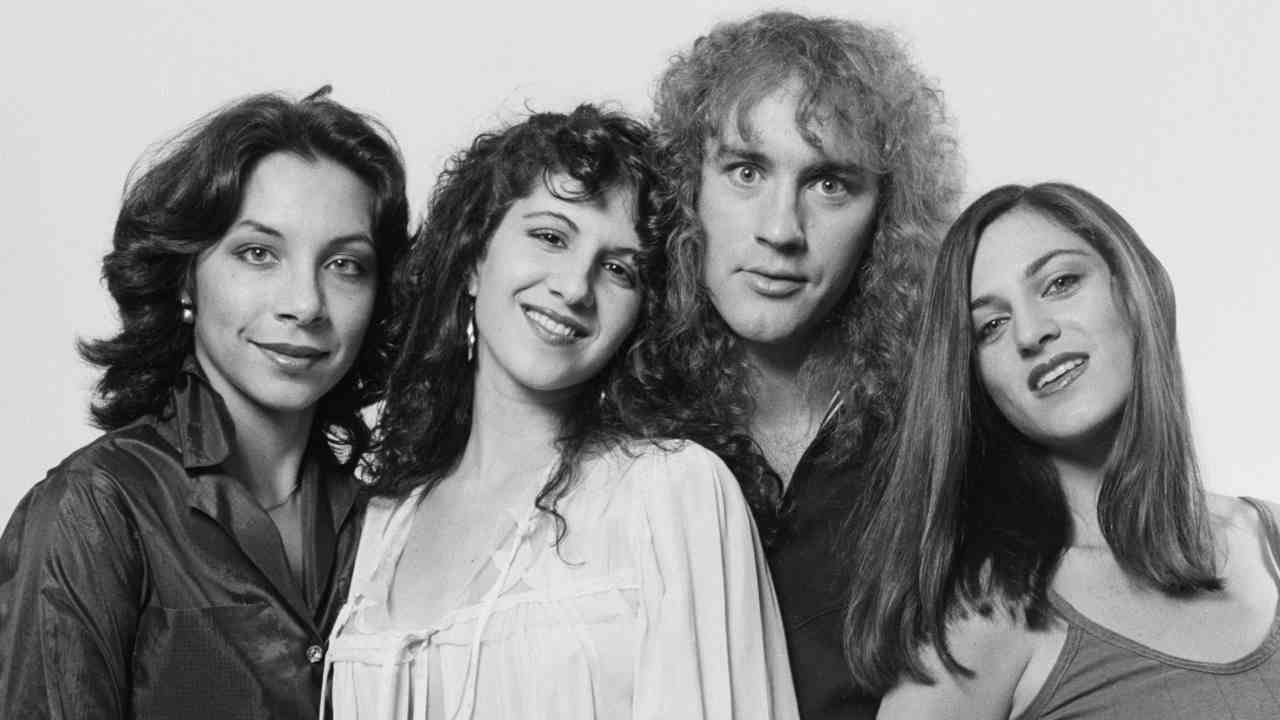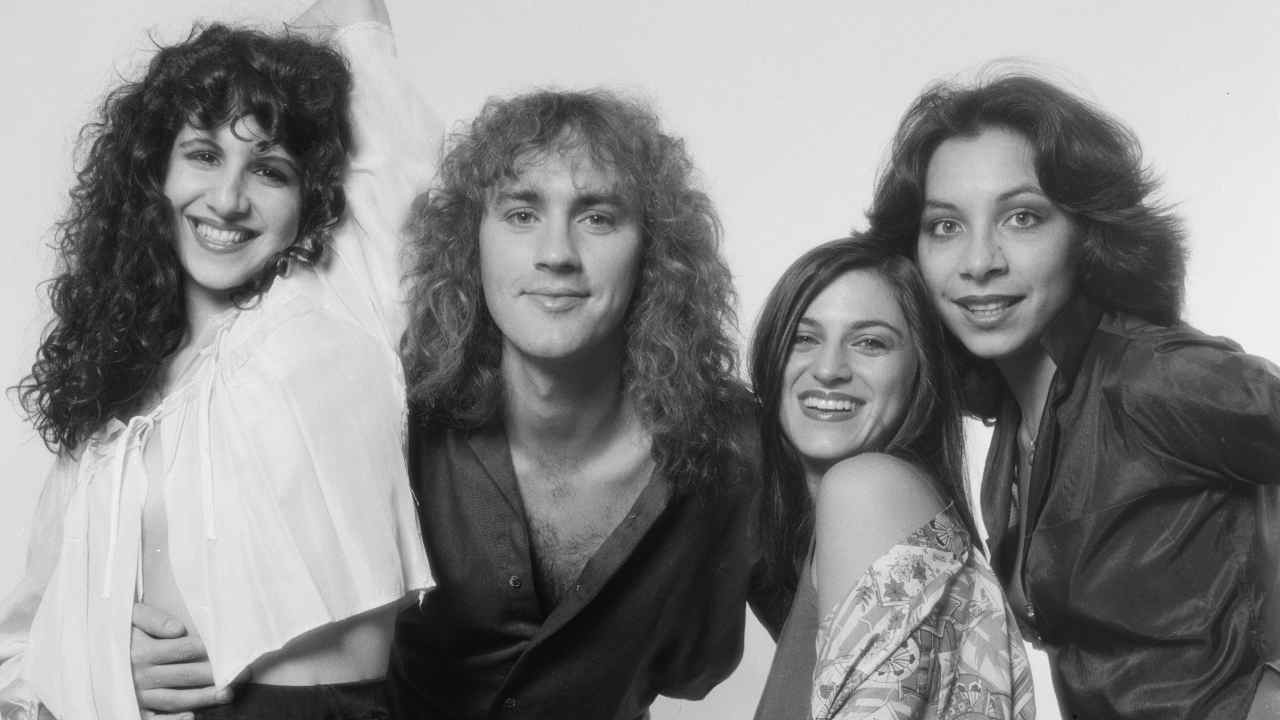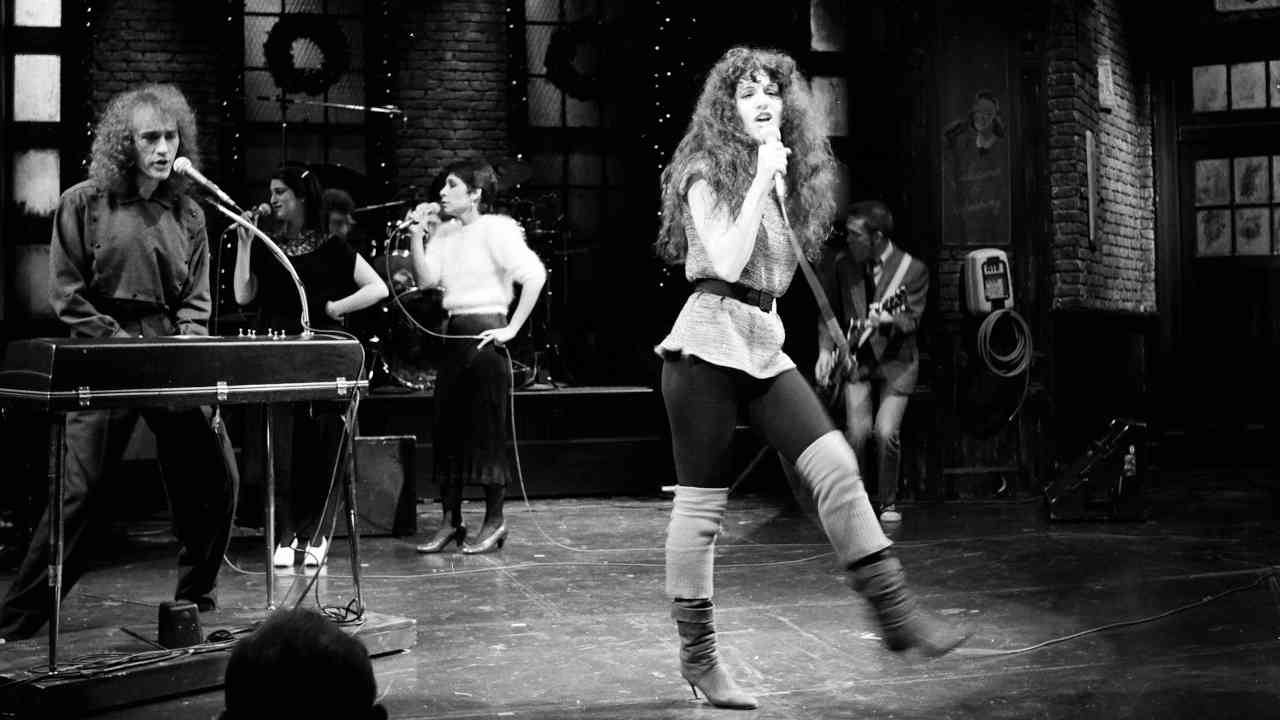
On Thursday, June 19, 2008, Desmond Child stepped into the limelight at a lavish event at the Marriott Marquis Hotel in New York City to be inducted into the Songwriters Hall Of Fame.
The award had been a long time coming for Child, the leading songwriter of his generation. A man who countless artists – from Kiss, Aerosmith, Bon Jovi, Joan Jett, Michael Bolton, Cher and Alice Cooper to Ricky Martin, LeAnn Rimes, Kelly Clarkson and Katy Perry – have to thank for propelling them to chart success.
Yet fame was something that has always eluded Child as a performer. Despite scoring a minor US chart hit for his group Desmond Child & Rouge in 1978 with Our Love Is Insane (featuring an introductory bass line as impressive as the bass riff that opens Chic’s Good Times), the man who has since been proven to possess so remarkable a Midas touch as a songwriter and producer failed in his bid for artistic superstardom, leading to a very dark period in his life in the early 80s, before his dramatic change in fortunes began.
A vocal quartet featuring Child, Maria Vidal, Diana Grasselli and Myriam Valle, Desmond Child & Rouge released two albums at the tail-end of the 70s that feature some of the most amazingly vivid lyrics and intricate vocal harmonies ever committed to vinyl (or, if you prefer, CD, as both have eventually seen release on the format in the last 10 years). They really deserved to reach a far wider audience than they gained at the time, innovatively mixing rock and disco and coining a style that Child himself feels wasn’t fully acknowledged until the emergence of Scissor Scissors some three decades later.
Born John Charles Barrett in Gainesville, Florida in 1953, Desmond spent his childhood growing up in the Sunshine State, where he developed a love of music from his mother, Elena Casals, a noted Cuban songwriter who had written songs for a number of Latin artists. Child first learnt to play the piano and write songs of his own in order to imitate her, but it was hearing Laura Nyro’s More Than A New Discovery at the age of 14 that gave him the extra push towards a career as a songwriter and artist in his own right.
Forming an acoustic folk duo with high school friend Debra Walls and dubbing themselves Night Child, they travelled north for gigs in Woodstock (where they cut demos with Van Morrison’s band at Bearsville Studios), Boston and Montreal. They came close to signing a deal with Sire Records in 1971 before returning to Florida, where Child attended Miami–Dade College. It was here that he met Maria Vidal and Diana Grasselli.

“Desmond and I were in acting class together and he asked me to rehearse some scenes by Ionesco with him,” recalls Diana. “I thought he was wonderfully creative and definitely visionary. He was still living at his mother’s house when I heard my very first Desmond Child song. He played me something he wanted me to sing on, and I just wept. His songs, prior to those mega rock songs everyone knows him for now, were very, very poignant.
“I met Maria, who became Desmond’s girlfriend, when she and I auditioned for the same part in a play,” Diana continues. “I fell in love with her fire, her amazing personality, her quick wit and her energy. One of us got the part, and the other got another part in the play, and we all became inseparable friends for the rest of our lives.”
Indeed, so inseparable were they that when Desmond and Maria moved to New York, Diana soon followed, where she teamed up with Maria and two more of Desmond’s friends, Myriam Valle and Melanie London, in a musical comedy act.
“Melanie was a designer and comedy writer who wrote a lot of outrageous, irreverent social commentary comedy with a lot of silly sexiness that was very unique and perfect for what was happening in the scene in New York at the time,” recalls Diana. “I came to a rehearsal with Maria and met the other girls and it wasn’t long before I joined them.”
Needing a backing group for a gig, Desmond invited the quartet to join him and things moved swiftly from that point on. Initially known as Desmond Child & Lips, the change to Desmond Child & Rouge occurred once Melanie London had opted for a career as a comedienne rather than a singer, although she has remained close to her former colleagues ever since.
By this point Desmond was attending college by day and driving a cab at night. Maria worked as a singing waitress (where she gained the nickname Gina that Child would borrow later for Bon Jovi’s Livin’ On A Prayer), Myriam was also at college and working various jobs, and Diana was a receptionist with a Wall Street firm. Life centred around Desmond and Maria’s apartment on 81st Street, on the Upper East Side, where they annoyed the neighbours with their regular rehearsals.
Although it would take Desmond Child & Rouge three years to finally gain a recording deal, they had already firmly established themselves as one of New York City’s top club attractions. Each member of the group took turns singing lead, although Desmond took on the majority of the workload.
“Oh my God, his songs were so beautiful!” says Diana. “In the centre of all the raucous hilarity and inexhaustible energy that we shared as a band, were these unbelievably sweet and beautiful songs that Desmond wrote. He knew how to capture the soul of a person or place or experience, and in a few verses and chord changes reduce the toughest of us to tears. Maria was a spitfire of intelligent, raw sexuality and mirth with a sultry, smoky voice. Myriam was a kick-ass R&B/blues singer, with a voice like a steely banshee and a personality to match it. I had a very high, lighter and more poppy sound, with a classical background that lent itself to singing Our Love Is Insane, and which sort of set the bar for the altitudes of some of our harmonies together.
“There was a strong underground rock scene at that time, fuelled by singer/songwriters like Laura Nyro, Todd Rundgren, Paul Simon and Melissa Manchester,” continues Diana, “as well as a burgeoning gay club scene, which gave way to a vibrant cabaret world, with Bette Midler and the like offering a lot of energy to a young, hungry and ambitious group such as we were. There were a couple of hot spots in the newly developing Soho and in the West Village – The Ballroom and Reno Sweeney – which were the first little nests in which we hatched our careers. Our audiences loved us, and we loved them. We were very disciplined and goal-oriented in those early years of our career together. Desmond was a powerfully driving and inspirational force: tenacious, relentless, full of vision and conceptual ideas, not to mention gorgeous songs and arrangements, and so certain about what hard work and focus could do.
“We were also very interested in the visual effects of our live shows,” Diana adds, “spending a great deal of time and energy on that aspect. Our shows were high energy, and there was magical communication between us and the audience. Whenever we did a gig, we would design the show as if we were playing a bigger house and soon we were playing those too. We aggressively promoted ourselves and even got arrested for fly-postering and stencilling ‘Desmond Child & Rouge’ on all the curb sides of NYC. People would often say, ‘Oh, I’ve heard of them’ even before they knew who or what we were. The world was our oyster and we were having it for breakfast, lunch and dinner.”
According to Desmond, it was Eliot Hubbard at the Reno Sweeney in Manhattan’s West Village who could best lay claim to discovering the group. “Then we finally found management in Roy Ericson and the late Matthew Mark, who helped get us the deal with Capitol Records.”
They were signed by A&R man Richard Landis, who also became their producer. Their self-titled debut album was recorded at Media Sound on West 57th Street in New York, with the aid of some of the city’s best session players, including guitarist Elliott Randall and drummer Allan Schwartzberg. Rick Wakeman got a credit for synthesiser arrangements on the The Fight, which Desmond had co–written with Kiss’ Paul Stanley.

“We had Charlie Calello (a former bandmate of Frankie Valli, not to mention a producer and arranger of outstanding repute) arranging. He was actually the real producer,” states Diana. “Richard Landis, bless his heart, was so underqualified and rife with personality issues that he didn’t stand a chance in this room full of wilful brilliance. He had a few good ideas, but was mostly a hindrance.”
Things looked promising at first. Our Love Is Insane did reasonably well as first single (reaching No.50 on the Billboard chart), and the band toured throughout the US; in Tulsa, Oklahoma, Maria’s movements on stage during Main Man almost caused a riot among some of the locals.
Despite ultimately disappointing sales, the group’s first album had been a thoroughly positive experience, but its follow-up was created during a particularly turbulent period for all concerned – not least because Desmond had finally come to terms with the fact he was gay.
“I was dealing with the issues surrounding my sexuality at that time,” acknowledges Child. “Maria was my girlfriend when the group formed. I didn’t realise that I was gay. I adored her, but by the time we went on tour I had come out, and we were no longer a couple, but still had to sleep in the same room, as all the accommodation had been pre-booked. Maria and I have remained very good friends, but Truth Comes Out [from the group’s second album] was written about those events.”
Desmond Child & Rouge’s second album, Runners In The Night, was cut in June 1978 with Richard Landis curiously once more at the helm. It was certainly a darker record than the debut, and moving in a distinctly rockier direction than the mixture of rock, disco and Latino influences that had preceded it.
“It was written and recorded very quickly,” says Desmond. “The first album had been released in January 1978, we toured, and then we went in to do the second album after Capitol had given up on the first one. It was written and recorded in less than two months and owed much of its heavier approach to the guitar work of G.E. Smith.”
Erstwhile Dan Hartman sideman Smith was a very bluesy, rhythmic player who had been discovered playing in Newhaven, Connecticut and invited to join Desmond Child & Rouge’s live band, sticking around for the record. He wound up marrying the Emmy award winning comedienne and actress Gilda Radner (a staple on the hugely popular TV show Saturday Night Live) after Maria had played Cupid. Smith would later play with Hall & Oates, and became the musical director on Saturday Night Live.
Runners… was released in 1979. That same year the group also contributed Last Of The Ancient Breed to the soundtrack to Walter Hill’s legendary New York gang movie The Warriors, while the girls sang backing vocals on Genya Ravan’s superb Love Is A Fire, also from The Warriors’ soundtrack.
Despite admissions of continuing problems with Capitol, Child feels there was one major reason why Runners… failed to make more of an impression.
“We lost momentum because we never toured for Runners…,” he states. “The girls got work on Gilda Live, which was Gilda Radner’s Broadway show [they appear on the resulting album Live From New York, alongside G.E. Smith], but that did lead to our appearance on Saturday Night Live at Christmas in 1979, but we were not a unified group at all at that point, and there were some arguments backstage. For some reason Myriam wanted to play guitar, and we had a standoff with her, finally convincing her that it wasn’t a good idea.”
By this point it was clear to Child that decisions needed to be made with regards his future. He asked Capitol for Desmond Child & Rouge to be released from their contract, mainly because he felt the label just didn’t understand what the group were about, but also because of his own issues.
“It was the fact that at the time it was very difficult to be gay, but the music was screaming out what was going on,” Child explains. “Because of what happened with Desmond Child & Rouge, I was traumatised for a long period. I was used to writing to a concept and writing for myself was just not inventive. I went through a really rough road until I worked with Bob Crewe.”
Crewe, a noted writer of hits for groups such as the Frankie Valli And The Four Seasons, The Rays and LaBelle, was a huge influence. “He taught me how to write a song,” says Child. “He gave me the skills that I have today!”
Emphasising the bond that Child and the girls shared, they still continued to work together on an increasing number of sessions despite no longer being considered an active group, as Desmond took tentative steps to establishing himself as a songwriter and a producer, having his material recorded by Ellen Shipley, Teri De Sario, Cher (on her strangely overlooked 1982 album I Paralyze) and Novo Combo. The friendship between the quartet has endured: many of the recording projects that Child has been involved with over the past 30 years – including collaborations with Alice Cooper, Meat Loaf and Cher – have involved the work of at least one, if not all, of the Rouge girls as backing vocalists. One such recording was Cher’s version of Main Man (for her 1987 album, Cher) from Rouge’s first album.
Buoyed by his successes with Bon Jovi, Aerosmith and Cher, Desmond gained a new recording deal for 1991’s Discipline album, although anyone expecting it to essentially be a third Rouge album was left deflated as the songs were very dark and more personal to Child than ever, although the superb Love On A Rooftop went some way in reminding us all of what we were missing.
“I’m a great believer in things happening for a reason. If I had become a huge star then I may not be alive today,” responds Child. “I wasn’t destined to be a great rock star. I’m too thin-skinned. I tried the solo route, but I still wasn’t out as a gay man by that point either. I came to the conclusion that I reached many more people with my songs through working with others.”
While the girls have all gone on to achieve certain levels of success in various musical spheres, Maria Vidal has been the only member of the trio to score themselves a solo hit (1984’s Body Rock, from the film of the same name). Now married to producer/song writer Rick Nowels, she released her first, self-titled solo album in 1987.
“I’ve sung on so many records over the years,” she told me in 2009, “but the Desmond Child & Rouge stuff really holds up well. There was no bullshit about it. We were very real. There was this amazing expression of creativity between us. We weren’t scared of anything. We had a lot of raw talent. Maybe if we’d had different management it could’ve worked better. It just got very explosive.”
Originally published in Classic Rock Presents AOR issue 3







